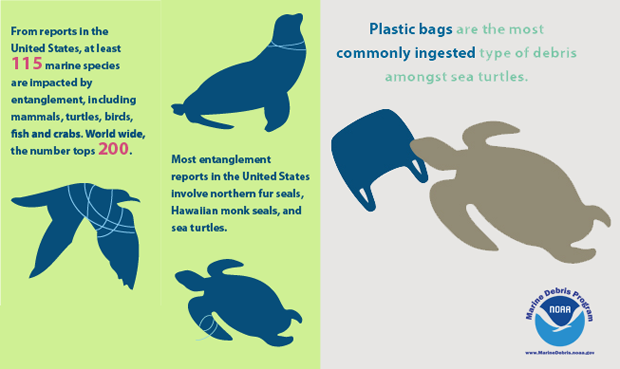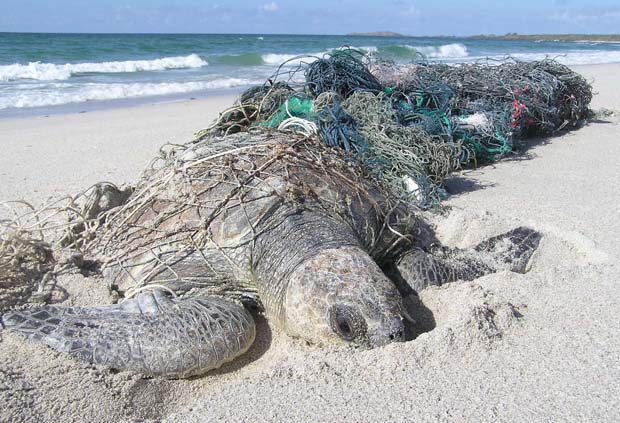What We Know About “Ghost Fishing”
April, 2015
[dropcap]T[/dropcap]he NOAA Marine Debris Program, in partnership with the National Centers for Coastal Ocean Science, published a report today that assesses the current state of science on “ghost fishing” and the derelict fishing gear that causes it.
Ghost fishing occurs when lost or discarded fishing gear that is no longer under a fisherman’s control continues to trap and kill fish, crustaceans, marine mammals, sea turtles, and seabirds. Derelict fishing nets and traps can continue to ghost fish for years once they are lost under the water’s surface.
Ghost fishing can impose a variety of harmful impacts, including: killing target and non-target organisms, including endangered and protected species; causing damage to underwater habitats, such as coral reefs and benthic fauna; economic losses from target species mortalities and replacement costs; and contributing to marine pollution.
 The report examines existing scientific literature to determine what we know about these impacts, as well as gaps in knowledge and suggestions for prevention and mitigation.
The report examines existing scientific literature to determine what we know about these impacts, as well as gaps in knowledge and suggestions for prevention and mitigation.
For example, some studies estimate that over 90 percent of species caught in derelict fishing gear are of commercial value, which can contribute to a significant loss of revenue for fishermen.
It notes that while it’s impossible to know exactly how much derelict fishing gear is in the global ocean, studies say the problem is getting worse due to the increased scale of global fishing operations and the introduction of highly durable fishing gear made of long-lasting synthetic materials.
This report is the third in a series of scientific assessments on marine debris topics. The program released overviews of entanglement and marine debris ingestion last year.
- Download the complete report . . .
- Marine Debris Tracker . . .
- See our previous story on harmful marine debris. Plastic, the scourge of our oceans . . .


